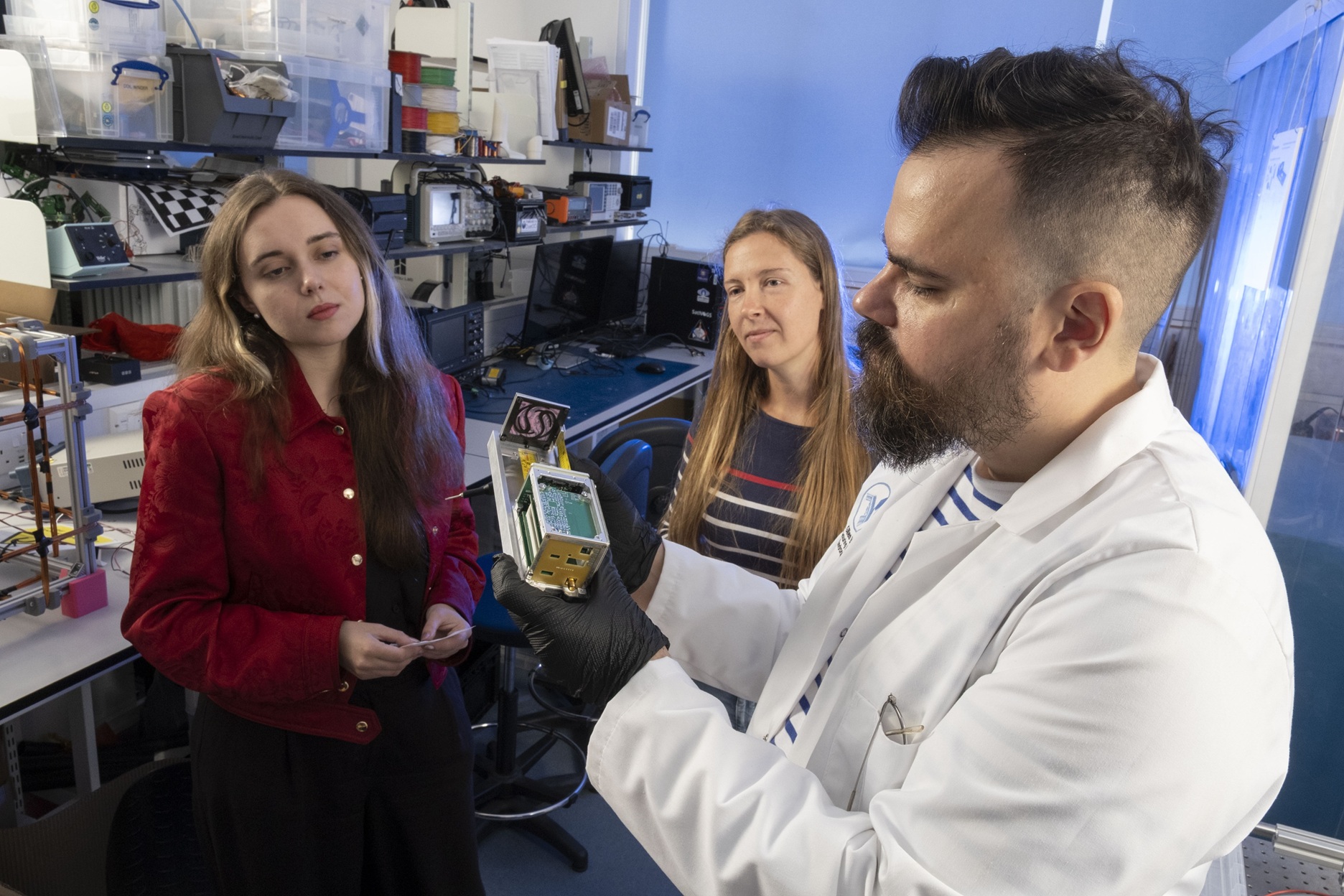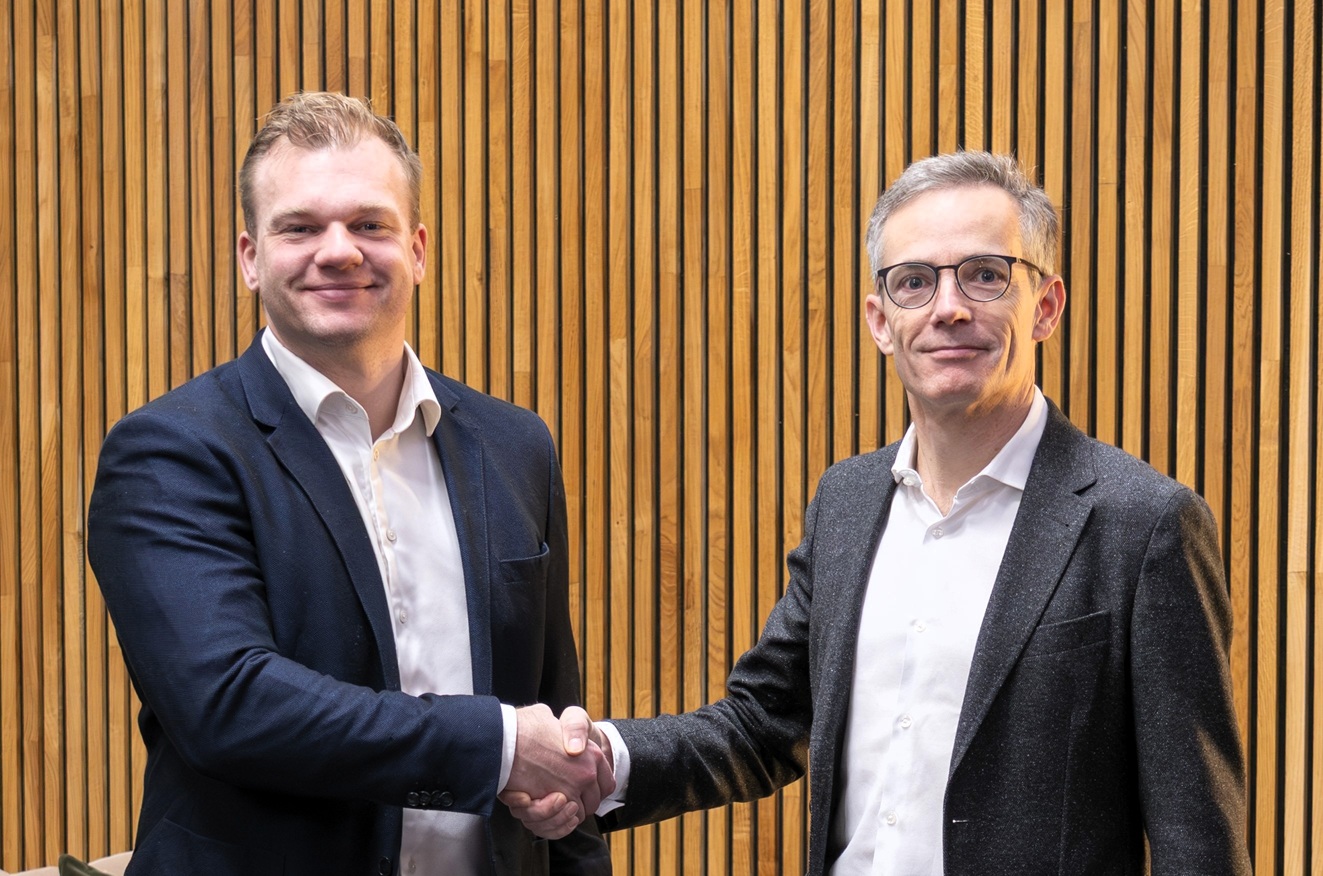Landing on Mars one step closer for British-built rover

Image courtesy ESA
Rosalind Franklin has been built with government backing to try to detect life, past or present, on the Red Planet.
After several weeks of delays due to bad weather the latest tests to determine the parachutes’ fitness for use in the harsh conditions of Mars saw the descent vehicle dropped from a stratospheric balloon at an altitude of about 29 km above Sweden.
The 15 m-wide first stage main parachute performed flawlessly at supersonic speeds, while the 35 m-wide second stage parachute experienced one minor damage, but decelerated the mock-up of the landing platform as expected.
The team will be looking in more detail into the origin of this new anomaly before finalising the configuration of the next pair of drop tests to take place in October or November from Oregon, USA.
The rover was built in Stevenage by Airbus, while the UCL Mullard Space Science Laboratory led on a key instrument known as the PanCam, a high-resolution 3D camera which will look at the terrain and rocks to try to detect signs of life.
The University of Leicester, Teledyne e2v and STFC RAL Space worked on the Raman Spectrometer which will use laser light to identify particular minerals and organic compounds and search for life. The rover is due to launch in 2022, arriving on Mars in 2023.
Chris Castelli, director of programmes at the UK Space Agency, said: “The Rosalind Franklin rover showcases some of the best of the UK’s space sector and will be Europe’s first planetary rover.
“It’s fantastic that this flagship mission is now one step closer to launching to the Red Planet to lead the search for signs of life.”
Adjusting and testing the ExoMars parachutes has been a priority following a series of unsuccessful drop tests in 2019 and 2020.
The tests focused on demonstrating the readiness of new equipment developed by Airborne Systems, as well as verifying changes to the parachute and bag provided by Arescosmo. They follow ground-based high-speed extraction tests, conducted by NASA in California, in May.
Landing safely on Mars is a notoriously difficult task. This testing is an essential part of ensuring a successful mission.
The UK Space Agency is the second largest European contributor to the ESA-Roscosmos ExoMars mission, having invested €287 million in the mission and £14 million on the instruments. This, in addition to successful negotiations with ESA, secured key mission contracts for the UK space sector.
Richard Franklin, Managing Director of Airbus Defence and Space UK said: “If the M25 is where London stops then Stevenage is where space starts. After more than a decade of design, development, and manufacture of the ExoMars rover in Stevenage, it’s great to see these latest successful tests putting us on target for launch next summer.
“Seeing the rover’s tracks across the Martian surface as it starts its search for life on the Red Planet will not only be a fantastic testament to the UK’s space capability but also help inspire the next generation of space engineers.”
Thierry Blancquaert, ExoMars programme team leader at ESA, said: “We’re very happy to report that the first main parachute performed perfectly: we have a supersonic parachute design that can fly to Mars. There will be at least two further opportunities to test this parachute design to gain further confidence.”
The Rosalind Franklin rover requires two main parachutes – each with its own pilot chute for extraction – to help slow it down as it plunges through the Martian atmosphere. The 15 m-wide first stage main parachute will open while the descent module is still travelling at supersonic speeds, and the 35 m-wide second stage main parachute is deployed once at subsonic speeds.
The parachute had originally been packed inside the bag around the central mortar that contains the pilot chute, such that upon extraction it unwrapped in a 360º fashion. Folding the band of the parachute in two layers, so that it first unfolds in one direction and then 180º in the other direction, proved to reduce the tendency of the canopy to experience friction incurred by wrapping around the mortar.
Once the module gets close to its destination, it will enter a six-minute landing sequence.
Drag from the atmosphere will slow it from 13,000mph to 1,000mph.
The first parachute will then be deployed, followed 20 seconds later by the second one.
When it gets around 0.6 miles above the surface, an engine will start to slow the descent even further to allow for a safe touchdown.
The latest Size and Health of the UK Space Industry report shows the UK space sector is booming. Income from the UK space sector has risen from £14.8 billion to £16.4 billion, representing growth of 5.7% in real terms, while employment is up by 3,200 from 41,900 to 45,100.












